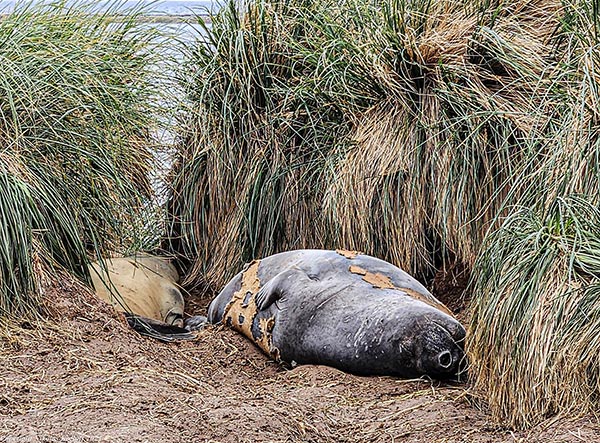
Exploring Carcass Island
In contrast to challenging weather and rough conditions on Saunders Island, disembarking on Carcass Island was more agreeable.
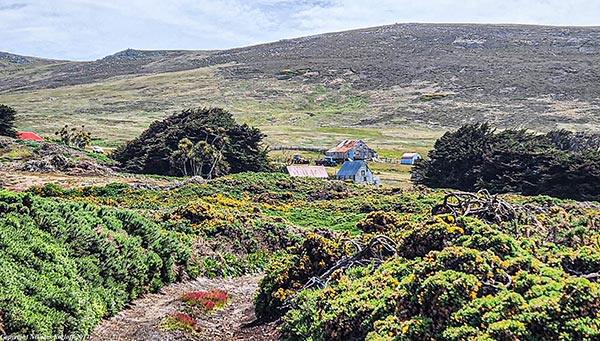
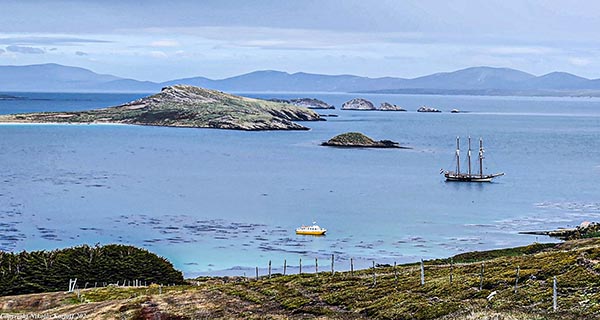
A vexing environmental question in the Falklands is how to conserve native tussac grass, which has been severely diminished due to sheep grazing.
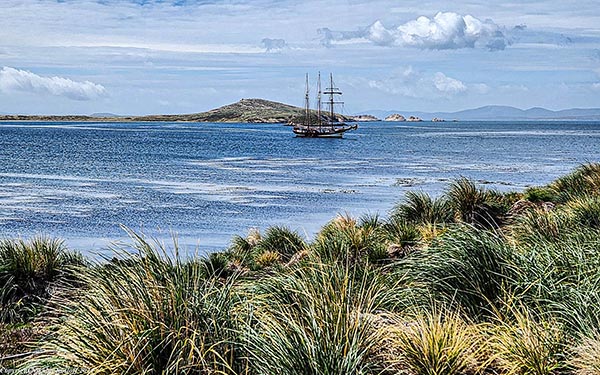
After hiking down the road, we came to a lodge.
A striated caracara at the lodge. Darwin complained about the “mischievous” birds. In addition to the Striated Caracara, Darwin became keenly interested in other species of birds on the Falklands such as the Upland Goose, which displayed no innate fear of humans. Such behavior stood in stark contrast to the bird’s demeanor on the mainland, leading Darwin to speculate that animals could change their behavior over time in response to the environment. From his notebook, it is clear that Darwin first began to consider the concept of island endemism while visiting the Falklands, an idea which he developed much further after visiting the Galápagos.
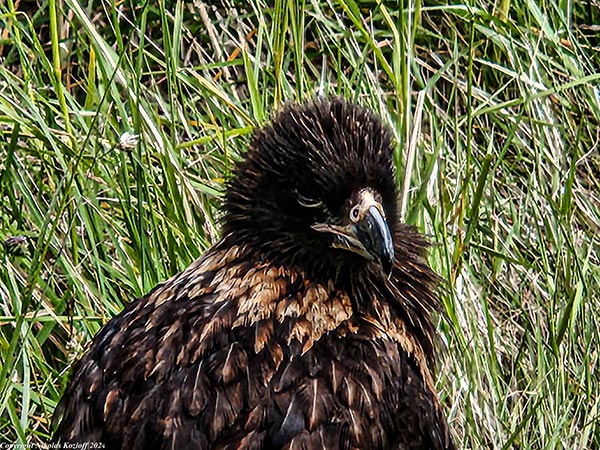
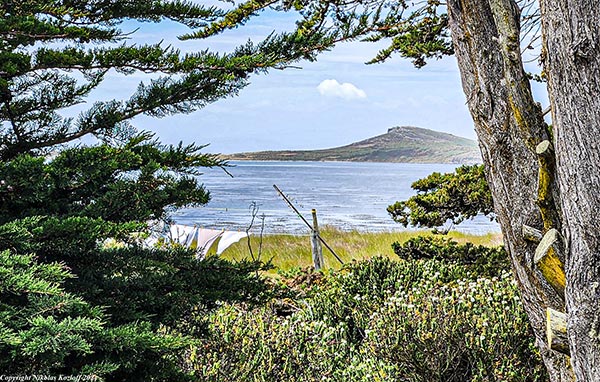
Driving to the other side of the island, we saw a colony of elephant seals. Historically, whalers and sealers hunted the animals around the Falklands.


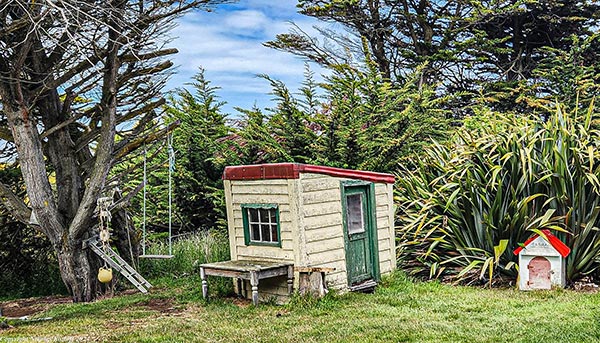
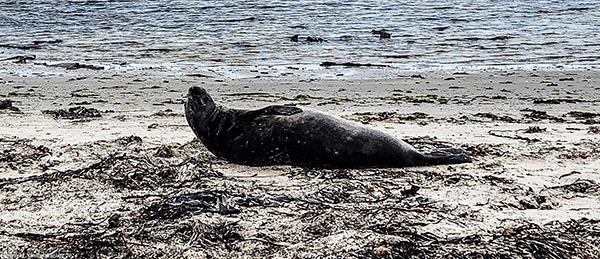

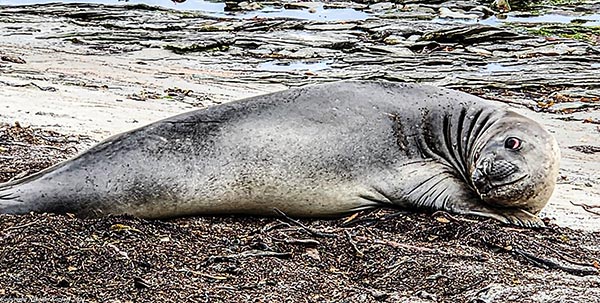
Leave a comment